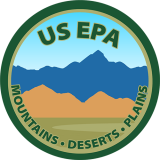Mountains, Deserts and Plains
What We Do
The Office of Mountains, Deserts and Plains is a western lands-focused office to address cross-cutting issues unique to the region. It houses oversight responsibilities for federal hardrock mining cleanup sites west of the Mississippi River; serves as a central contact for other federal agencies, states and tribes with responsibility for or impacted by these sites; and develops innovative technologies and adaptive management approaches to address legacy pollution. Additionally, the office supports efforts of conservation organizations to voluntarily undertake projects to improve conditions at abandoned mines (Good Samaritan projects).
Created during the EPA’s 50th anniversary, the Office of Mountains, Deserts and Plains aims to improve the Agency’s ability to respond to unique needs associated with mining sites West of the Mississippi and accelerate positive outcomes for communities and the environment.
Background
Currently, the diffused deployment of EPA’s resources in the remediation of hardrock mining sites creates challenges impeding cleanup progress due to the distinct environmental impacts of historical mining operations and unique ecosystems of the American West, where most of these sites are located. Historical methods for mineral extraction and beneficiation can create environmental problems, including acid mine drainage, erosion and sedimentation, chemical releases, fugitive dust, habitat destruction, surface and groundwater contamination and subsidence. Additionally, there are many mining sites for which there are no viable current or former owners or operators, which can make it difficult for these sites to compete with Superfund sites across the country for funding from the annual Superfund appropriation.

